How I recruited a diverse board and why it was important to me
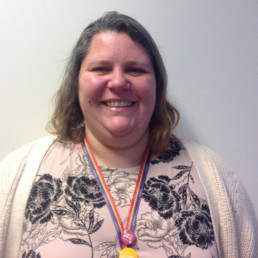
Written by Ninna Makrinov
Organisational Psychologist with over 20 years' experience in Higher Education. Currently the Chair of Governors at Water Mill Primary School.
On 30 September I Tweeted “I have been re-elected chair of governors at Water Mill Primary School. Such a pleasure to be able to serve. I’ve also recruited for all our vacancies and have the most visibly diverse board I have seen in the school this far. Thanks @Penny_Ten for your ideas.”
Here, (in a blog that was first published on the BAMEed website) I articulate why diversity on the board is important to me. And share some ideas that you might want to try when recruiting new members to yours.
A diverse board:
I am chair of governors in a small one form entry primary school in Birmingham. We are extremely proud of the diverse community we serve. It includes children from all over the world, many who arrive to school without speaking English. Because of our location near the University of Birmingham and Queen Elizabeth hospital, some of our children are only with us during their parent’s studies or work placements. When visiting the school, I see this fantastic diversity. And the children see it too! In our latest Ofsted report, the inspector quoted a child saying ‘We are all unique and great friends from different countries. We are like the united nations here’. We also have children who live permanently in the local area; they also come from diverse backgrounds.
Leadership has historically been another matter. When I joined the board we were all white; I brought some diversity, as I immigrated to the UK (for the second time) with my children and they joined the school with still little English. I did not question the lack of diversity then. It seemed the norm, educated white British people providing a service for the community. We cared, we wanted the best for the children. But we (or at least I) did not see how important it was the diversity of our community was visibly represented within the board.
I have been through a personal journey during the past 4 years that totally changed my focus. For years I have believed in multiculturalism, I have worked in international education, I have lived in three countries. Looking back, I was rather naïve in my beliefs. Maybe because in Chile, where I come from, racism is blatant I did not see it in the UK. I started attending an anti-racist pedagogies forum at work a couple of years ago, that changed my outlook. I will not delve into my process, I imagine it would bore a diverse audience to read about how I realised about my white privilege. I should have known!
Having a visibly diverse board is important to me because I realise I cannot serve a community I don’t understand. All voices need to be heard and mine is not more important than others. Our children will be able to see themselves in us, parents might trust us more. Our discussions will, I expect, be enriched by asking questions coming from different perspectives. I hope that recruiting a visibly diverse board is a starting point to diversifying our leadership, improving our policies and engaging in deep reflection. I genuinely value diversity, I have for some time; but I now know that diversity in leadership doesn’t happen by accident.
Recruiting diverse members:
Recruiting board members for school governance is a challenge in itself. I imagine I am not the only one who at some points has felt that I am begging for members. And we need to make sure we have the right skills set on the table. I know some boards achieve this by having specialised committees and big numbers. At Water Mill, we made a decision that the best governance solution for our school was to have a small board (9 members), with frequent meetings and (almost) no committees. We embarked on a skills development journey using the DfE’s competency framework. And we made a conscious commitment to recruiting diverse members. We also decided not to appoint unless we agreed of the value to the board.
As vacancies arose, we openly indicated that we were looking for diverse members. That was, I am sorry to say, not enough. The reason for this was obvious to me when I was delivering a confidence training session to university students and one of them openly discussed what she called the elephant in the room, all were women from ethnic minority backgrounds. She shared her experiences of discrimination and how she would not apply for a job in a place that was not already diverse, to avoid this. In her eyes, a recruitment pack that mentioned diversity was just saying ‘not for me’. How could we make our obviously white educated board the place for those who were not like us? I got advice on ideas to try and came up with some myself.
I still feel that our current diverse board is serendipitous. Three governors were elected by parents and I found my next door neighbour (and good friend) on Inspiring Governance. However, I hope some of the ideas I tried might help:
- Commit to diversity: Discuss diversity openly in your board. Create a list of the characteristics you ideally would want to have. Not all diversity if visible, but visible diversity can help demonstrate your commitment openly.
- Celebrate the diversity you already have: Think about how your board and/or school is already diverse. Share this and make it visible. Add diversity stories on webpages, for example. Our headteacher updated our webpage recently; I think it looks great.
- Ask for what you are looking for: Although I mentioned above that just adding a diversity statement was not enough, I still think this is needed. Make sure it includes your reasoning; I changed ours from ‘we welcome applications from BME backgrounds” to “We would particularly welcome nominations from parents from diverse ethnic backgrounds. We are committed to the diversity of our school; we would like our governing board membership to demonstrate this.”
- Target specifically for the diversity you need: I used Inspiring Governance and Governors for Schools to support my search (if you have not tried them, do!). Inspiring Governance has a shortlisting system. In this occasion we wanted men and minority members; I did not contact any white women in my search. The vacancies were open to all, but I did not reach out to them.
I am looking forward to continuing this journey. A diverse board is not only about recruitment, but also about retention. This will require us to effectively listen to each other, value diverse opinions, ensure everyone feels like a valued member. I start this year with 4 new members, almost half of my board. We are integrating opportunities to get to know each other and training sessions during our meetings. My main focus is to build each member’s confidence in their role. I will know that I have succeeded when others are ready to step up and take the responsibility of chairing the board. I love my role, but I believe my board is better served by diversity in leadership.
“You Can’t Be What You Can’t See”: Growing Future Leaders in Education
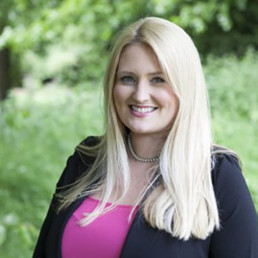
Written by Sarah Mullin
Deputy Headteacher and EdD student
A blog by Sarah Mullin and Dr Deborah Outhwaite
It is widely acknowledged that gender representation, in addition to other forms of diversity, is essential for society to thrive, yet women are still underrepresented globally in politics, health, business, and other organisations. Despite research which highlights the positive influences women bring to leadership positions, many organisations report difficulties in attracting and retaining women leaders. Schools can therefore play an important role in helping girls to realise their potential so that they can be the change that they want to see in society.
How can schools better prepare girls for future leadership positions?
- Engage men as allies
It is important for us to engage boys as allies by raising awareness of gender privileges so that they feel confident to challenge inequality when they see it. We need boys to appreciate the positive qualities that women leaders bring to the table and to work with girls to so that gender equality can be achieved.
- Encourage STEM careers
Just 24% of UK STEM roles are occupied by women and these are wide-ranging, technical professions which are critical to the economy. By harnessing positive role models from organisations such as STEM Ambassadors, we might ignite a passion for future careers in STEM, particularly in young women from households where there is no prior experience in these areas.
- Financial education
Women live longer but financially poorer lives than their male counterparts, and part of this is around the ownership of finances, occupying lower paid, part-time roles, and the lack of professional careers with occupational pensions. Although no one young wants to think about retirement, financial education is key.
- Tackle Imposter Syndrome
For years, girls have outperformed boys academically, yet girls may lack the confidence to believe in themselves and their future potential. We can help girls to be aware that having feelings of self-doubt is normal; imposter syndrome can affect anyone at any time. We can help girls to recognise the positive skills and attributes they possess so that they feel empowered to embrace and celebrate their positive qualities.
- Encourage Self-Care and Wellbeing
We teach our children and young people to take care of their physical and mental health; it is equally important to encourage girls to invest in their wellbeing. Whether schools are promoting positive body image or banishing berating self-talk, girls need to grow up appreciating that self-care is far from selfish: it is a necessity.
- Inspirational Role Models
We can celebrate the multifarious roles that women leaders possess: women can be mothers and partners in addition to being leaders. Let us teach our girls about the possibilities of flexible working patterns, showing them how to be assertive and confident so that they are able to make the future life choices which are right for them. Let us help our girls learn about inspirational women from diverse backgrounds in a range of careers so that they have positive role models to look up to.
For the first time in history, two women shared the 2020 Nobel prize for Chemistry proving that the realisation of a more equitable society is achievable. So, let’s encourage our girls to aim high, dream big and work hard to become the change we want to see in society. After all, you cannot be what you cannot see.
To Cite this article, please use:
Mullin, S. & Outhwaite, D. 2020 ‘You Can’t Be what You Can’t See: Growing Future Leaders in Education’, Engage Magazine, issue 21, p9.
Sarah Mullin is a Deputy Headteacher and Doctor of Education student. She is the curator of the bestselling book What They Didn’t Teach Me on My PGCE and the founder of #EduTeacherTips, a YouTube channel for teachers, by teachers.
Dr Deborah Outhwaite is the Director of the Derby Teaching Schools Alliance (DTSA), BELMAS Council Vice-Chair, co-convening a Research Interest Group (RIG) on Leadership Preparation and Development (LPD and a Network Leader for @WomenEd in the East Midlands.
Wholeness and School Leadership: Why Race and Identity Matter
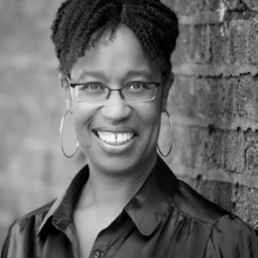
Written by Viv Grant
Director of Integrity Coaching
It is my belief that good school leadership has at its heart a desire for wholeness. It is a wholeness which individuals seek to see manifested through a harmonious interplay of their deepest values and beliefs, by fostering right relationships with themselves and others.
Recent events sparked by the death of George Floyd have clearly illustrated that we live in a society that is far from whole. Fault lines run through the lives of individuals and organisations, teachers and school leaders, families and their children.
We have seen how people have come together to try and repair the damage but there can be no papering over the cracks. For the dream of racial equality to be real, complete healing and transformation is needed.
A gradual dawning
I have witnessed over the past few weeks, that there has been a gradual dawning for many white school leaders of what is being asked of them. This has been a significant paradigm shift. There has been a gradual awakening of the need to review and re-shape white identity in order to accelerate the change that the black community has cried out for.
I recognise and understand that this is unfamiliar territory and can be scary for many. Never before in the UK has the debate on race equality in our schools shifted its gaze so steadfastly onto white identity and race. For as long as I can remember, it has been the other way around. Race equality work has predominantly focused on the black experience of racism and strategies for enabling the black community to overcome the huge injustices and inequalities that they have faced.
Now the narrative has changed. White teachers and school leaders are being called to do their own identity work.
A range of responses
For some, the immediate response has been defensiveness. And yet for others it has been a quiet, studied introspection; a turning inwards accompanied by a deep desire to learn, to enquire, to change, to understand and to grow.
For those who have turned inwards, I am certain that attention to the existential challenge of learning to be whole, will result in, “a net moral gain for all concerned. As that potential grows within us, we join in the potential for personal and social change” (Parker Palmer)
It may seem strange to some that I describe this turning inwards as part of a desire to be whole. Yet as a coach, I have seen the many, many ways in which the school leadership role has caused many leaders to live a divided (and sometimes painful life). Becoming aware of one’s own racial identity and how it has contributed to this can only be an act of service to the greater cause – to a world in which racial equality is a reality for all.
Whole person work
For this to happen, white school leaders need to be supported to see that this is whole person work; work that engages emotions, values and beliefs. It is work that requires them to engage with new personal and professional frontiers. It won’t be easy work, but it will be right work. It won’t come with a National Professional qualification stamp, because the work is ontological. The work is about you.
It will require you to:
- Engage in self-enquiry with an open heart and open mind
- Dig deep and develop greater levels of self-awareness
- Explore your own cultural blind-spots and biases
Essentially, this work will require you to decide how this type of identity work can bring greater agency and potency to your work as a school leader. If you are open and willing, it can bring you to a point where you can say, to be ally in the struggle for greater racial equality my inner truth is:
“The plumb line for the choices I make about my life, about the work I do and how I do it, about the relationships I enter into and how I conduct them”
(Parker J Palmer)
Our society needs to be healed and our schools need to be places of transformation and healing and white identity work has to be a central part of that healing process.
My Wellbeing as a LGBT Teacher

Written by Jared Cawley
Being a teacher who identifies as LGBT (lesbian, gay, bisexual and transgender) has presented its challenges. I believe a fundamental link between identifying as LGBT and wellbeing is safety. At a basic, psychological level, safety plays an integral part in our wellbeing and ability to function as a human. To feel unsafe, means that feelings of uncertainty, anxiety and fear are on loop in our everyday lives. If we do not feel safe in our environment, then our wellbeing will suffer. When we have good mental health and wellbeing, we can work productively and creatively, feel a sense of purpose and achievement, build strong relationships with friends and colleagues, and thrive personally and professionally. As a gay man, I am not part of the majority. I am marginalised. The working world is predominately heteronormative, where ‘straight’ is the preferred and encouraged sexuality.
LGBT Maltreatment
By looking at our recent history, society has not been kind to us queer folk. LGBT people have been spat at, demonised by the press and public, punished and incarcerated by law makers, chemically castrated and driven to suicide (Jones, 2017). The LGBT community has a legitimate right to feel unsafe in today’s world. Across the planet, seventy-three jurisdictions still criminalise private, consensual sexual activity between adults of the same sex. Roughly half of these are Commonwealth countries. Terrifyingly, there are twelve countries which impose the death penalty for being gay (Human Dignity Trust). In a huge number of countries, LGBT victims of sexual or gender-based violence cannot access justice mechanisms or get proper support.
A recent report shows that LGBT people are at a greater risk of being victim to hate crime compared to heterosexual people, where incidents are continuing to rise (Hudson-Sharp & Metcalf, 2016). Also, in the same report, if you identify as LGBT, you are more ‘susceptible to mental health problems than heterosexual people due to a range of factors, including discrimination and inequalities’. I may have painted a bleak and depressing portrait of the world, but this is the reality for many LGBT people. Being a teacher, it is paramount to work in an environment that is supportive, inclusive and takes your mental health and wellbeing seriously and makes you feel safe being the person you are.
Coming Out
The concept of ‘Coming Out’ is a political act. It is a form of rebellion against the heteronormative agenda. We spend our entire lives continuously ‘coming out’ to each new person we meet. This can be exhausting and risky. Making the decision to share your sexuality can be liberating, but we just do not know how that person is going to react. Luckily, I work in a school where I feel accepted, safe, and privileged to share my identity as a gay man. However, being comfortable, accepted, and safe is not always the case for every LGBT person; some LGBT teachers may think it is too risky to ‘come out’, as this could lead to discrimination and hostility from colleagues, parents and students.
Over the years, I have had to navigate the difficulties of working in a heteronormative environment and tread carefully about how open I am about my sexuality. I work in an international school where difference, otherness and diversity are celebrated and encouraged. In my school, families and students come from all corners of the world, dozens of nationalities and languages are seen and heard in our corridors and playground. There is a real richness of diversity and cultures. Yet, there are still moments where I question my personal feeling of safety and fear whether I will be accepted or not when meeting new families, students, and colleagues. Being open about your sexuality in the workplace is a personal choice. I know some LGBT teachers are comfortable to share their sexuality with everyone. On the other hand, I also know teachers who choose to not disclose their sexuality for many reasons. When meeting parents and families, or even colleagues, we do not know their opinions or beliefs about the LGBT community, or how they will react knowing we identify as LGBT. This feeling of uncertainty perpetuates a feeling of unsafety, having consequences for our wellbeing and mental health. This level of uncertainty may prevent LGBT teachers from applying for promotions or moving on to a different school (Lee, 2019). The anxiety and stress of having to ‘come out’ again to new people or having the school community take more interest in your personal life due to promotion, may be a risk that LGBT teachers are not willing to take. To question whether you will be accepted due to your sexuality, is something heterosexual people do not experience.
Section 28
Although the UK has made strong advancements in legislation for the protection of LGBT teachers, some teachers still feel fear in their schools today. Catherine Lee, in her research, talks about the consequences Section 28 had on the education profession. From 1988 to 2003, LGBT teachers were silenced, and their wellbeing damaged by law. This piece of legislation stopped maintained schools from promoting the acceptability of homosexuality. Lee’s research shows that LGBT teachers who lived through Section 28 have a very different experience in their workplace, to those who joined the teaching profession after the repeal in 2003. Those teachers who lived through this persecution are less likely to see their personal and professional identities as compatible and less likely to bring their partner to a school social event (Lee, 2019). Not only should schools encourage and foster an inclusive culture for all but have whole-school practices that are uniquely in place to support LGBT teachers. I think when teachers feel valued and supported, they will feel safe having a positive impact on their individual wellbeing.
What can school leaders do to support LGBT staff’s wellbeing?
Most LGBT school staff will have experienced some sort of battle with their mental health. For a school to be productive and successful, everyone who works there should have good mental health and be supported when help is needed. Here are some tips to support the wellbeing of LGBT staff:
- Use inclusive language
Making small changes around inclusive language can have a huge impact on either making people feel accepted and/or feeling excluded. If we make staff feel excluded, their wellbeing will suffer.
Here are my suggestions:
- When asking about a colleague’s weekend or personal life in the staffroom, be mindful of the pronouns they use to describe their partner. If they do not specially describe their partner as ‘he’ or ‘she’, they make be indicating their partner is of the same sex. Never assume someone is heterosexual and is attracted to the opposite sex.
- Instead of greeting your staff team with, ‘Good morning ladies and gentlemen’, say, ‘Good morning everyone’. With this, you have included all genders and identities without assuming everyone identifies with the gender they were assigned to a birth.
- Challenge colleagues and students who use phrases that diminish sensitivity or acting like a particular gender. For example: ‘man-up’, ‘you throw like a girl’, and ‘boys don’t cry’.
- Visibility
LGBT staff need to feel accepted and be shown that their workplace is inclusive. School leaders should proudly show they support LGBT staff. If we do not feel accepted, then this may have a detrimental effect of our wellbeing and mental health.
- This could be by wearing LGBT lanyards, flying the Pride flag outside and inside their school, having displays around school that celebrate diversity and LGBT issues.
- Have your staff complete a learning walk where LGBT is the focus, can you spot anything in your school that says this is a safe space for LGBT students, families, and staff?
- Educate Yourself to understand LGBT perspective and experiences
Read books and use organisations that specifically discuss LGBT voices in education and whole school approaches. It can be difficult for people who are not part of a minority group and see life from their perspective:
- Catherine Lee’s ‘Courage in The Classroom. LGBT Teachers share their stories’.
- Shaun Dellenty’s ‘Celebrating Difference. A Whole School Approach to LGBT+ inclusion’.
- Andrew Moffat’s book series for the No Outsiders programme.
- These organisations offer a plethora of teaching resources with supporting LGBT colleagues and students: Schools Out, Stonewall Education, Mermaids UK, LGBT Ed, and The LGBT Primary Hub.
The LGBT Primary Hub offers a snappy timeline of our history and glossary of LGBT vocabulary.
References
Dolan, C. (2014) Into The Mainstream: Addressing Sexual Violence Against Men and Boys in Conflict. Available at: “https://reliefweb.int/sites/reliefweb.int/files/resources/Into_The_Mainstream-Addressing_Sexual_Violence_against_Men_and_Boys_in_Conflict.pdf”
Jones, O. (2017, July) Hatred of LGBTQ People Still Infects Society. It’s No Time to Celebrate. The Guardian. Available at: “https://www.theguardian.com/commentisfree/2017/jul/27/lgbtq-partial-decriminalisation-homosexuality-gay-trans”
Human Dignity Trust. LGBT The Law. Available at “https://www.humandignitytrust.org/lgbt-the-law/”
Hudson-Sharp, N., Metcalf, H. (2016) National Institute of Economic and Social Research (NIESR). Inequality Among Lesbian, Gay Bisexual and Transgender Groups in The UK: A Review of Evidence. Available at “https://www.niesr.ac.uk/sites/default/files/publications/160719_REPORT_LGBT_evidence_review_NIESR_FINALPDF.pdf”
Lee, C. (2019) Fifteen years on: the legacy of section 28 for LGBT+ teachers in English schools, Sex Education, 19:6, 675-690, DOI: 10.1080/14681811.2019.1585800
The importance and power of strong leadership to create sustained change with respect to inclusion and diversity
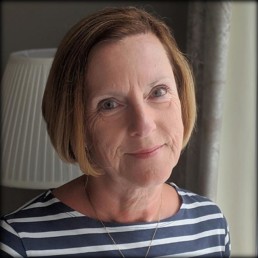
Written by Dr Jill Berry
Thirty years teaching across six different schools in the UK, state and independent, and was a head for the last ten. Has since completed a doctorate and written a book.
This post is based on my contribution to the Boarding Schools’ Association online conference on Inclusion and Diversity on 14th October 2020. Thank you to BSA and Ammy Davies-Potter for inviting me to be part of this event.
“I want to conclude this opening session by focussing on the role of leaders in schools, if we are to move forward and achieve progress with respect to how diverse and inclusive our schools are.
I was a head in the independent sector for 10 years – until 2010. Since then I have worked with many schools and leaders at all levels, focussing on leadership development, so I am still very much involved in the world of education. I am keen to do all I can to support leaders so that THEY can support, and constructively challenge, those they lead to achieve their professional best.
I think it was Vic Goddard, the head of Passmores Academy, who said ‘as a head, you make the weather’. School leaders have the opportunity to model the behaviour they hope others will emulate – students, staff, other leaders across the organisation, governors, even parents – all members of the wider school community. The best leaders I know have a strong sense of moral purpose, integrity and humanity. Their leadership is based on clear principles, and the groups and communities they lead know what these principles are. Ideally, leaders need to LIFT those they lead, rather than grinding them down.
So modelling a principled commitment to respecting diversity and increasing inclusion is going to be part of this. I expect that if you’re in this webinar you share this commitment, and you’re not just ticking a box to show you’ve paid lip-service to the issue.
How do leaders model this commitment? I think it’s about proving yourself to be a strong ally, as Matthew has already mentioned this morning. It’s about being determined to stand by those who face barriers as a result of their ethnicity, religion, culture, age, gender, sexuality or disability – whichever protected characteristic, or, taking into account the issue of intersectionality, whichever multiple characteristics, apply. It’s about giving support to ensure others can take a seat at the table, and they can use their voice and be heard. Can we help to amplify those voices and ensure we model receptivity, especially when what we hear may be challenging and difficult? Can we be strong, powerful allies and encourage those we lead to embrace allyship too? Can we stand up, not stand by? Can we embrace discomfort and recognise that saying nothing doesn’t show respect? Following the killing of George Floyd and the #BlackLivesMatter drive, I was really struck by the Martin Luther King quotation:
‘In the end what we remember will be not the words of our enemies, but the silence of our friends.’
Sometimes when a situation is sensitive, we can feel reluctant to speak up out of fear of saying the wrong thing, choosing the wrong words. I think we’ve realised in recent months that saying nothing could be the worst thing of all. We have to have dialogue. We need to listen and learn, raising our awareness and acting on what we learn. I really liked what Temi said earlier about moving from ‘intention’ to ‘impact’.
I’m very aware that I only have a few minutes, so I’ve given Ammy some recommendations to share with you – podcasts and readings, including an excellent blog post by Hannah Wilson about how to be an effective ally. There are also links to two online events coming up – one specifically for governors, which I hope may be useful for you to pass on to others. See the references at the end of this post.
What do I think is important with respect to strong leadership to create sustained change in this area?
I have four suggestions to make this morning:
- Be clear about your school’s vision and values, and how a respect for diversity and inclusion is reflected in any statement of purpose and priorities and what your school stands for. Ensure your principles are clearly communicated and understood within and beyond the school community, and that these principles are LIVED in the day to day life of the school – in your relationships, practices and policies.
- Be prepared to talk openly about the importance of respecting diversity and fostering inclusion – keep listening and learning. Accept it will be uncomfortable at times, but be willing to embrace the complexity rather than shrinking from it. This involves heads and governors working together, having robust conversations and ensuring you are aligned and pulling in the same direction. It also involves engaging your students in discussion so that they know they are listened to and they are aware of different perspectives and the importance of equitability. They are the next generation – the future and our best chance of achieving sustained change.
- Be willing to advocate for your students where there are tensions, for example between parents and their children over any issue to do with inclusion. I think this is what good schools have always done – while trying to bring parents and children together when there is conflict, helping to resolve difficulties and find a way forward, schools still need to be clear that they are on the child’s side rather than (in the independent sector) automatically on the fee-payer’s, if their principles and moral purpose clearly indicate that this is the right thing to do. Schools have to do the RIGHT thing, not the EASY thing.
- Lastly – work on the curriculum, alongside subject experts, to consider the curricular repercussions of a commitment to diversity and inclusion. I’ve recently read ‘Leaders with Substance’, by headteacher Matthew Evans and he is excellent on the centrality of the curriculum and the focus on WHAT we are teaching and WHY we are teaching it, rather than just HOW we are teaching.
In summary, I think strong leadership is about being a strong ally, and encouraging those you lead to do the same. Courage is clearly needed – there may be pushback from some parents, some governors, some students, some staff. As a head I remember the “This isn’t the kind of community I am buying into” conversation. But if the behaviour or approach behind that sort of comment is actually discriminatory, we have to be strong enough to stand against it.
The resources and links will give further information and sources of support as school leaders determine to do all they can to be strong allies, to address inequity, to make progress and to move forward.
I recognise it isn’t easy.
I strongly believe it IS possible. I don’t think you’d be here if you didn’t share that conviction.
I hope the rest of the day helps to confirm that.
Thank you for listening.”
References:
Anti-racist education – selected resources collated by The Chartered College
Black Lives Matter podcasts
Hannah Wilson (@Ethical_Leader) blog post on how to be an inclusive ally – which contains further resources within it
Biden Wins!
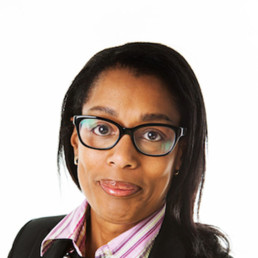
Written by Dianne Greyson
Director of Equilibrium Mediation Consulting and Managing Partner - Synergised Solutions Ltd
When I saw the announcement on Saturday 7th November 2020, I was so happy. I jumped up and down, I was so elated. People may think this is an odd response from someone who lives in the UK. Not at all, there are many people in the UK who felt the same way I did. Emotions were on full display. My twitter feed was immersed with joy and happiness. As I continued with my happy thoughts, I began to wonder why I felt the way I did and why others felt like me. It really wasn’t difficult for me to work out.
Trump represents all that is wrong in the world. He wanted to divide his nation and the world by creating an atmosphere of hate towards those who did not look like him or think like him. His desire to rule in this way showed his need to dominate. He empowered like minded people to rise up and deliver a wrath of hatred which I imagine he hoped would create some sort of master race.
He is the epitome of all that I fight against. As a black women, I use my voice to fight against those who wish to create division and dominate others because they think they have a right. The Joy that I felt about Biden’s win, is the joy that I want to continue to feel when I am advocating for the rights of people to feel valued and respected, no matter what ‘group’ they belong to. My continuous campaigning on the Ethnicity Pay Gap is just one ways for me to visibly demonstrate through action the injustice that has befallen black, Asian and ethnic minorities because others feel they have the right to treat us differently.
Like many of us who are advocating for the rights of others, Biden has a tough road ahead, I hope with the combined strength of Vice President Kamala Harris they can get into some ‘good trouble’ to make the change that USA needs. I hope that we can all learn from this moment and feel reinforced that, when we advocate for the rights of people who have been deliberately treated badly because of structural discrimination, that we are on the side of history.
I would like to leave you with a quote from the amazing Maya Angelou:
“Develop enough courage so that you can stand up for yourself and then stand up for somebody else.”
The need for a trauma-informed, bias-aware and compassionate curriculum
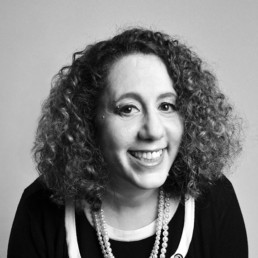
Written by Laila El-Metoui
Equality Advocate | Stonewall Lesbian Role Model 2020 | Pride 365 Champion | Helping leaders foster inclusive & diverse workplaces through training and consultancy | Founder of Pride in Education and Educating OUT Racism
A massive thank you to DiverseEd for organising such a comprehensive event.
My reflections are about us having a trauma-informed, bias-aware and compassionate curriculum, so what does that mean?
One of the previous panelists (Amanda) mentioned refugees and trauma in the previous panel and my curriculum background is in ESOL , EFL teaching English to migrants, refugees and people seeking refuge which is better than referring to them as ‘asylum seekers’. I will be talking about it from a Further Education perspective in the UK and looking at the language we use.
Trauma-informed:
We can look at it from many angles but I’d like to suggest a couple
Firstly personal trauma , you cannot look at someone and guess what their background and experiences have been. Secondly historical trauma – which includes decolonising the curriculum and not looking at subjects in silos for example when teaching French one could look at where it is spoken in 29 countries, why ? because France colonised those countries, the language we use is important, these countries were not ‘conquered’ as stated in britanica.com but invaded. From an ESOL perspective it means being mindful of potential triggers and having systems in place to support them but also the trauma that people may have experienced as a result or leaving their homes or the current pandemic.
Bias-aware:
Breaking down stereotypes and being aware of our own prejudices is a good way to start.
Looking at LGBT+ lives for example, some of the myths commonly heard within the sector include – you cannot embed LGBT+ within classes where people have low level of English, looking at the the language we use and teach for example asking about pronouns for referring to partner and sibling rather than husband and wife, sister brother will lead to a more inclusive curriculum. Other panellists (Lisa) mentioned stories in the previous panel and Chris talked about the lack of visibility in course books, for those very reasons I have designed my own resources, one can embed any themes within a story. I have written narratives which included themes such as domestic violence, social isolation, my journey to the UK. By creating relatable and meaningful content we will develop more than reading, writing, speaking and listening skills, skills like empathy, critical thinking and compassion.
Compassionate:
Compassion is about kindness and fostering an environment where people are free to make mistakes, to experiment and express their authentic selves. Challenging discrimination compassionately, eliciting the difference between understanding, agree and accept; eliciting the difference between an insult and an opinion. This needs to be contextualised within a whole organisational approach and include:
- the use and collection of data so that the content reflects local population
- understanding achievement, success and progression
- a zero tolerance policy with regards to discrimination
- easy access to resources knowledge sharing and training
- making different groups visible and represented (365 days a week) not just for black history month, LGBT HM or disability week
Organisations also need to have:
- supportive forums to raise issues
- a clear and visible commitment from senior leadership
But we also need funding, the ESOL funding has been slashed by the UK government more than halved in fact in the last 5 years. Other factors include the imminent exit from the EU, the immigration Law and many other socio-economic factors which contribute towards a hostile environment for people of colour.
Digital exclusion has been highlighted by this pandemic with the most vulnerable groups not being able to access ESOL provision due to not having a mobile phone or access to the internet. Giving people the tools to access learning is part of having a compassionate curriculum.
To end on a positive I want to highlight how kind people have been and I’d like to invite any ESOL practitioner watching to join the newly created Facebook group called Digital pedagogy for ESOL teachers, where practitioners can get practical tools and resources to share knowledge and support each other: https://www.facebook.com/groups/741096156803038/?ref=share
Laila El-Metoui she/ her / hers
https://www.linkedin.com/in/lailaelmetoui/
Equality Advocate | Stonewall Lesbian Role Model 2020 | Pride 365 Champion | Helping leaders foster inclusive & diverse workplaces through training and consultancy | Founder of Pride in Education and Educating OUT Racism
Diversity in the curriculum: teaching and learning with human stories

Written by Lyfta
Lyfta boosts classroom engagement by connecting with students on an emotional level and sparking interesting discussions. Students are able to connect with real human stories introducing them to diverse cultures and perspectives which builds knowledge and cultural capital.
A few weeks ago I had the pleasure of being part of a panel of esteemed colleagues at the Big Virtual Conversation as part of the series of events organised by #DiverseEd . The session, hosted by the dynamic duo, Hannah Wilson and Bennie Kara, was a chance for us to hear from a range of speakers from the education sector. I had the opportunity to speak about the power of human stories to help to bring diversity into the curriculum, and the key themes are outlined in this blog post.
Asking someone where they’re from can come from curiosity but can also serve to make people feel alienated, by placing undue emphasis on their right to belonging. If you ask someone instead, “tell me about yourself, what’s your story?” it invites them to craft their response and weave their answer so it belongs anywhere and on their own terms.
When you tell your own story you can start to make sense of the connections and links that bring the elements together. I’ve been thinking about the many threads and moments in my own life that seem to have led me to where I am now.
Human stories have always fascinated me. They led me to study social anthropology at university and gave me a reason to explore beyond the pages of books, leading me to buy a year’s open ticket and accidentally spend some ten years abroad, learning, working, teaching and continuing to weave into my story, stories and histories with new threads of different hues, that had echoes of my ancestors. I learned new concepts and perspectives every time someone told me a new story.
During this time I ended up learning Hebrew, which taught me words that just don’t exist in English, opening me up to new cultural concepts and helping me see the world in new and different ways. One of my favourite words with no English equivalent is the word ‘Firgun’ (פירגון)said ‘fear-goon’. This one word describes genuine, unselfish delight or pride in the accomplishment of the other person – or a generosity of spirit, an unselfish, empathetic joy that something good has happened, or might happen, to another person. It is similar to the South African concept of Ubuntu, I am because you are. Your success is our collective joy. And in the same way, your story, is our collective story.
I believe that human stories are more important than ever. The world events of the past 6 months during the global pandemic have brought this home to us in unique and often tragic ways. Like many in the education sector, I’ve been lucky to see the importance of my work’s potential to harness the power of humanity for the common good, even at this challenging time. At Lyfta, we capture human stories in the form of powerful short films and then turn these into 360 degree explorable, immersive and interactive spaces in which teachers and their students can learn about people, places, values and skills.
While we are restricted from close human interaction and travel, these human stories seem more precious than ever. In the words of one student, Thomas, with Lyfta’s immersive platform you are “able to instantly teleport yourself halfway across the world while staying on the same spot and see how things are for real”.
One important aspect of schools’ offering for young people in their care is the element of broadening their horizons, and instilling a sense of cultural capital through the music, texts, art and experiences that are included in the curriculum, such as school trips. We know that even in normal times, many children will not have the opportunity to go far beyond their own postcode.
Teaching and learning through human stories using Lyfta can be a powerful way to ensure that students have experience of the world as part of their entitlement to cultural capital. This can be important also as a way to teach an understanding of the protected characteristics, and show how diversity and equality are promoted within our schools.
We have seen that teaching and learning through immersive human stories can bring breadth, depth and meaning to concepts, taking them from the realm of information to the realm of deeper knowledge. Exploring Lyfta’s storyworlds enables teachers to unlock critical thinking skills in their students and helps them understand complex concepts, they were not aware of previously. Engaging in learning through these powerful stories can provide important breadth. Leading authority on learning, Chris Quigley, describes this breadth as both cultural capital ie. the background knowledge of the world students need for inference and understanding, and also the range of situations students need to grow confidence in the threshold concepts. These threshold concepts are understood as concepts that ‘open up a new and previously inaccessible way of thinking about something’.
Our vision at Lyfta is to ensure that by the time a child completes their education, they will have visited every country in the world, and will have met at least one person in every place they go. Right now, you can take your students all the way to an Ethiopian village to visit Mesgana and Gebeyeu in their family home, or hop over to Malte’s garden in Berlin to see how honey is made, or pop down to Cornwall to litter-pick with Rob on the beach, and so much more.
We have a limited number of places available on our funded CPD training webinars as part of the Connecting Classrooms through Global Learning programme. Participants who successfully complete the course will receive free access to the full range of Lyfta content and resources for a whole term.
Try Lyfta for free here: https://www.lyfta.com/
Remembrance Day
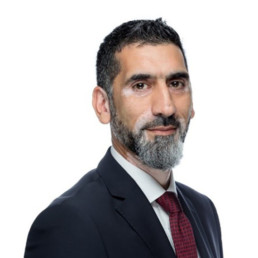
Written by Sajid Gulzar
Founding CEO of the Prince Albert Community Trust (PACT) and National Leader of Education
On October 31st 1914 a 26 year old gunner and his machine gun crew managed to hold their position against a German onslaught. The Germans were using more effective weaponry and outnumbered the gunner and his crew five to one. A second crew fighting alongside the gunner were killed as a result of a direct shell hit. The consequences of the machine gun crews being over-run were potentially devastating. The goal of the German offensive was to capture the vital ports of Boulogne and Nieuport.
The gunner and his crew held the Germans off, they continued to fire at the enemy all day. When all around him had been killed, despite being shot, the gunner continued to fight. Eventually, he was left for dead. The stand made on that autumn day on water-logged ground during the First Battle of Ypre, allowed reinforcements to arrive and the German advance was curtailed. The gunner would later be awarded the Victoria Cross. His citation noted ‘remained working his gun until all the over five men of the gun detachment had been killed.’
The gunner was born in the Punjab province of what is now Pakistan and his name was Khudadad Khan. This young man, a member of the Duke of Connaught’s Own Baluchis helped to ensure that two ports used to supply British troops with vital supplies, remained in Allied hands. He was the first Muslim soldier to be awarded the Victoria Cross and there is a commemorative stone in his honour at the National Memorial Arboretum.
During the course of the Great War, hundreds of thousands of young men left their homes behind to travel to Europe and fight for Great Britain. Many would never return. My mother recalls her father telling her that some villages were almost cleared of their young men. The level of sacrifice is indescribable. Khudadad Khan’s story is one amongst countless others of courage and lives cut short on the battlefields of Europe.
Many of you reading this may be reading about Khudadad Khan for the first time. I first heard about him about 10 years ago. I didn’t know about the Indian contribution to the war effort until well into my twenties. That is despite being taught history at school. Despite teaching history at school. It wasn’t until 3 or 4 years into my teaching career that I discovered that 1.3 million Indians including 400,000 Muslims fought during WW1. That many thousands of them died on foreign shores, having never been to the nation they were sacrificing their life for. I didn’t know that 12,000 wounded Indian soldiers were sent to Brighton, that many of them died and were buried there in the cemetery at Horsell Common.
Soon after I started teaching, the events of 9/11 changed our world. I remember watching the news in horror in 2005 as the details of the 7/7 attacks in London were emerging. I was actually on a visit to the school where I would be taking up a new role in the approaching September. Following the London attacks in particular, there has been a lot of soul searching about identity and belonging. What must the level of disenfranchisement be for someone born and brought up in a country to attack it from within. This is of course the extreme end of the spectrum that goes all the way from not quite feeling you belong to all out war.
I know this may appear a gross over-simplification but identity and belonging are definitely a part of the mix. So, where does Khudadad Khan and his regiment fit in? I spent much of my youth feeling like I don’t belong, particularly when it came to The World Wars. More than once I can remember being told that I didn’t deserve to be here, that the good people of Britain had sacrificed their lives for the freedoms that my family and I were enjoying. That somehow my being here was a betrayal of that sacrifice. I remember that my defence, at least as an adult, was based on the need of the country to rebuild post war and the importance of the migration of my father’s generation to Britain. At the time though, I didn’t know that my grandparents peers had fought and died too, in their hundreds of thousands.
I remember visiting a great aunt on a trip to Pakistan when I was 20 (I didn’t feel I belonged there either but that’s a whole other blog!). Her son had gone to fight for Britain in Burma during WW2. He never returned. 50 years after he left for war, she still waited for him to return. Would my knowing these stories have made a difference growing up? Had I known about the sacrifice of my forefathers to secure our freedoms, had I known about the extraordinary bravery of Khudadad Khan and countless thousands like him? Had I been taught that I had a vested interest, a shared history of blood shed for the cause? Quite possibly yes to all of the above.
What is quite striking is the missed opportunity at this time of year to use this shared history, this shared sacrifice to bring communities together, cement feelings of belonging and to help secure identity. It is not just schools that miss this opportunity, from film to the media, opportunities are missed or just ignored. The recent Dunkirk is an excellent case in point. The film completely ignores the Indian soldiers who were present and took part in the events depicted in the film. I’ve seen many a film and a documentary, chronicling the World Wars. What I haven’t seen very often is a true depiction of the scale of the commonwealth contribution to the cause. When in the epic and beautifully shot 1917, there was an attempt to include commonwealth representation, one right wing commentator described the presence of non-white soldiers in the film as ‘incongruous’. I would suggest that the reason for this is that their stories have never been told. As far anyone learning about the World Wars in school or watching films about them is concerned, they were fought by white men, predominantly in Europe.
The commonwealth contribution needs to be compulsory learning. Our children need to know that the poppy clad fields of European battlefields are soaked in the blood of the non-white commonwealth soldier as well as the English Tommy. Part of this shared history is that our children often live in neighbourhoods, streets and even houses that sent very young men off to war. In some cases these children also have forebears who left their towns and villages more than 3000 miles away to fight in the same war for the same cause.
If you read this whilst thinking about your school’s plan for marking VE Day and Remembrance Sunday, then please share the stories of the young men and women who came from afar as well as those closer to home. Let the poppies you sell symbolise shared sacrifice and shared history in this age of divisiveness.
Tuesday 25th May 2021
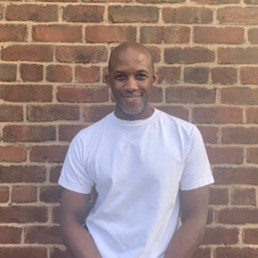
Written by Darren Crosdale
English and Media Studies-trained teacher, currently working in a large Liverpool comprehensive
This date will mark a year to the day of George Floyd’s murder. I use the word ‘murder’ deliberately because, despite the arguments that lawyers will no doubt make to the contrary, the world possesses clear, video evidence that it was murder, plain and simple.
I still have not seen the clip. I never will. To watch such imagery is, to my mind, self-flagellation. I do not engage in that torture and warn my family – especially my social media-addicted daughter – to think very carefully about the emotional toll such images can have on our psyche.
As the above date approaches, you can rest assured there will be blogs and vlogs and articles and news items asking how the world has “changed”. How that 8 minute and 46 second horror short and the resulting worldwide protests “changed” many aspects of society, including education. Like most teachers, I firmly believe in the power of education and I will definitely be curious about how the education world has “changed” following George Floyd’s murder. Up and down the UK, family, friends, colleagues and associates have responded to the Black Lives Matter movement with renewed vigour: change the curriculum; review the policies; train the teachers.
But as Frederick Douglass, the former slave turned writer and public speaker said: “Power does not concede without a demand.” I am not, at all, the only person who feels that the demands of racism are being placed on the shoulders of the victims. Such bitter irony. The stereotypes that we as thinking and evolving societies ought to have defeated centuries ago, remain: lower intelligence, higher physicality, unworthy histories. The list is, of course, longer and more subtle than this.
As an eternal optimist, I focus on the notion of things getting better in schools. I have to believe this. However, as an eternal optimist with a good memory, I recall that we have been here before. We have collectively focussed on “changing” our racist societies and racist institutions and racist individuals’ attitudes before. The whole country has been engaged in the discussion of diversity and inclusion and breaking barriers and moving forward more times than I care to count in my own lifetime.
The UK broached the topic of change after Stephen Lawrence’s murder in 1993 and the McPherson Report, four years later, made the term “institutional racism”, more mainstream. I worked in the Merseyside school that Anthony Walker, murdered in a racist attack in 2005, used to attend. People often forget that his White killers attended the school, alongside this wonderful young man. The Department for Children, Schools and Families examined the issue of Black educational attainment in 2007. Alexander Paul, an 18 year-old student from south London, gave a powerful presentation about being stopped and searched at the 2014 Conservative Party Conference. David Lammy, MP, in 2017 reviewed how ethnic minorities fared when they came into contact with the criminal justice system. I am not even going to discuss the coronavirus. The UK, a country that likes to boast about its multi-cultural status, ended up with one of the highest per capita death rates in 2020, and ethnic minorities were over-represented in these numbers as were the poor and public-facing workers.
Schools are especially busy as I write, early October, 2020. Most schools are engaged in some form of analysis: reviewing data, auditing curricula, employing speakers to deliver staff training. Will all these efforts to change the UK’s complicated attitude towards Black people in the education system yield results, however? There are still those on Twitter who struggle to link police brutality in the US with education in the UK (and, of course, fail to recognise this, in itself, is highly ironic.). So what if GCSE students, in 2020, do not study texts written by Black writers? So what if students do not learn the dual nature of Churchill? Wartime hero but also responsible for allowing three million Bengalis to starve. So what if students have no idea of the fuss surrounding Edward Colston’s statue being tossed into Bristol harbour.
What will schools be like by May 25th 2021? Will the government recognise that for all the past reviews and examinations of race, deep divisions and inequalities remain? Will the councils creating Task Forces to examine racial issues in their towns and cities create lasting change? Will enough school-based staff have had the necessary and uncomfortable conversations around race? Robin DiAngelo, in her best seller ‘White Fragility’ explains that middle-aged, middle-class white women are most likely to cry if their racial view of the world is challenged in any way. Will enough of these tears be transmuted into new ways of thinking and challenging the status quo?
The answers to these questions remain to be seen. We know our government has been remarkably quiet about the Black Lives Matter movement. The protests threw a much-needed light on our society and its continuing struggles with race – mostly because the education system has never properly learned to discuss our troubled history in an honest and guilt-free manner.
I watched BBC presenter Daniel Henry’s inspirational documentary ‘Fighting the Power: Britain after George Floyd’ (directed by Eddie Hutton-Mills) and wondered about the young Black women who, with their passion and social media savvy, organised huge marches in lockdown London during the summer of 2020. Will they be disappointed in a year’s time? Will they have noticed any changes? Will prime minister Johnson’s racial disparity review (led by a controversial Munira Mirza who is not quite sure if institutional racisms exists) have reported back by then? Who knows?
What I do know is that for the children in school at the moment – all children, not just the Black ones – carrying on as if huge protests about race never happened, as if things do not need a good shaking and sorting, as if their teachers do not need to learn about all types of inequality, is not an acceptable option.
Darren Crosdale
www.blackteachersanecdotes.co.uk

